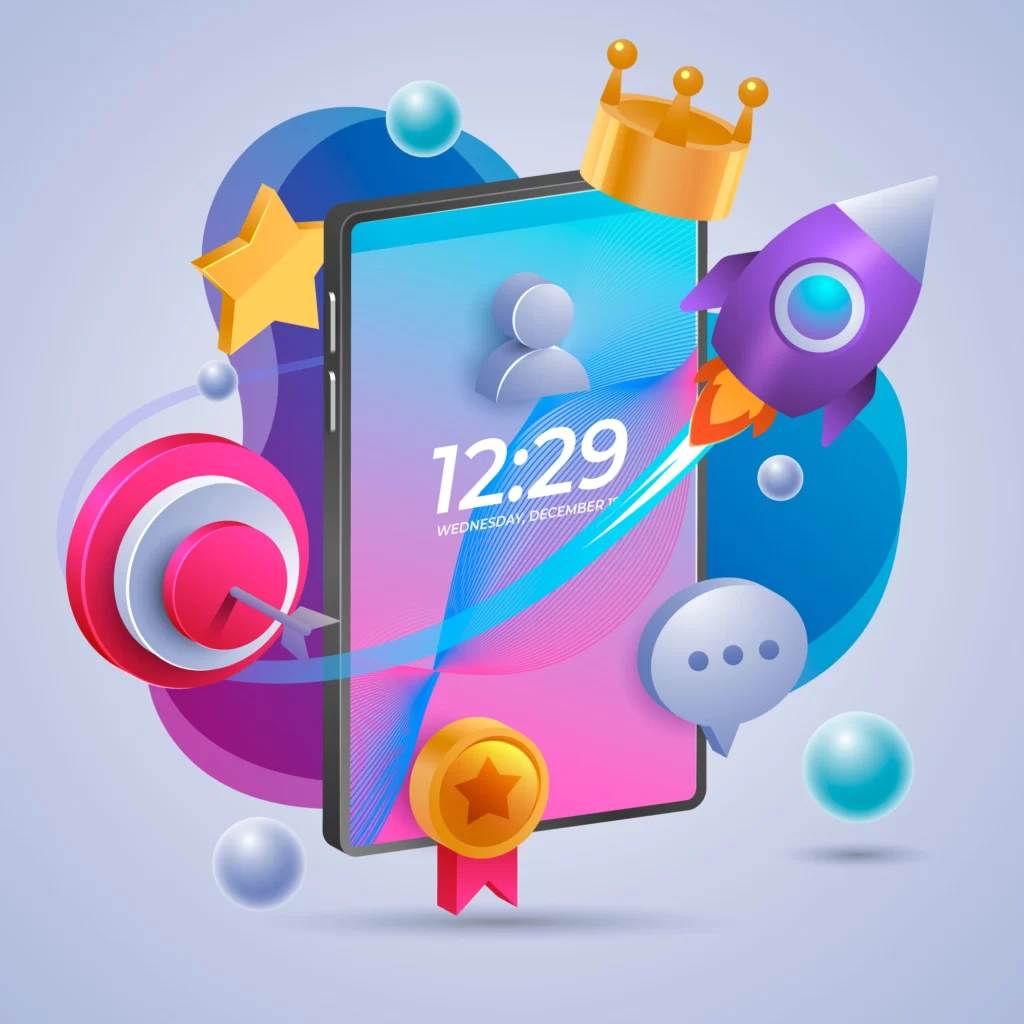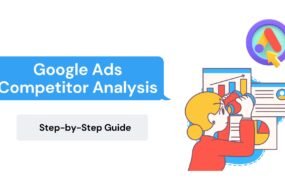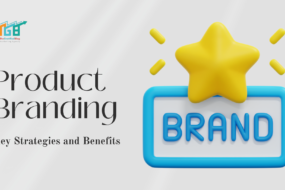
In an increasingly competitive digital marketing world, capturing and maintaining customers’ attention has become a formidable challenge for businesses. Gamification Marketing is a dynamic and innovative strategy that has emerged in response to this demand.
By incorporating game elements and mechanics into marketing campaigns, businesses are revolutionizing how they engage with their target audience and achieve their marketing objectives.
In this article, we will explore the concept of gamification marketing in depth:

So. let’s start;
Understanding Gamification Marketing And Its Key Elements
Gamification marketing employs game mechanics as a strategic approach and design elements to engage customers and promote products or services.
It aims to enhance customer engagement, loyalty, and retention by making the overall experience fun, exciting, and rewarding. This approach is efficient in today’s digital world, saturated with marketing messages. Consumers are overwhelmed and confronted with short attention spans.
Now, let’s delve into the essential elements of gamification marketing and explore how they contribute to the effectiveness of this strategy.
Well, Several critical elements of gamification marketing can be used to engage customers and make the overall experience more fun and rewarding.
These elements include
- Points, Badges, And Rewards
Points, badges, and rewards are fundamental to gamification marketing strategies that drive customer engagement and motivate desired behaviors.
- Points are a mechanism for tracking and measuring customer progress or activities within a gamified experience.
- Badges are virtual representations of achievements or milestones customers can earn through specific actions or accomplishments.
- Rewards incentivize customers to engage with a brand, complete tasks, or exhibit specific behaviors.
By incorporating points, badges, and rewards into gamification marketing efforts, businesses can motivate customers, increase engagement, and create a sense of enjoyment and achievement. These elements tap into customers’ desire for recognition, progression, and tangible benefits, ultimately driving desired behaviors and fostering stronger brand connections.
- Leaderboards And Competition
Leaderboards and competition are potent elements in gamification marketing that tap into customers’ competitive nature, driving engagement and fostering a sense of excitement.
Leaderboards: Leaderboards display the rankings or scores of participants, showcasing the top performers. They create a sense of competition and provide social proof, motivating customers to strive for higher rankings and recognition. Leaderboards fuel a sense of achievement and encourage customers to push themselves further to climb the ranks.
Competition: Introducing competition within a gamified campaign adds an extra layer of excitement and motivation. Customers can compete with each other to win prizes or rewards or simply for the satisfaction of being at the top. Competition stimulates engagement as customers strive to outperform their peers, creating a dynamic environment that keeps participants actively involved.
- Interactive And Immersive Experiences
Interactive and immersive experiences are integral to gamification marketing, providing customers with engaging and enjoyable interactions that enhance their overall experience.
Mini-games: Incorporating mini-games within a gamified campaign adds an interactive element that captures customers’ attention and encourages active participation. These games may vary from straightforward challenges to more intricate experiences, providing entertainment and a sense of accomplishment when completed successfully.
Puzzles and quizzes: Puzzles and quizzes present customers with cognitive challenges, stimulating their problem-solving skills and knowledge. By integrating these elements, businesses can educate and entertain customers simultaneously, fostering a deeper engagement and creating a memorable brand experience.
- Personalization And Customization
Personalization and customization are essential aspects of gamification marketing, allowing businesses to deliver tailored experiences that resonate with individual customers.
Personalized offers: By leveraging customer data and insights, businesses can create customized offers catering to customers’ needs and preferences. This level of customization makes customers feel valued and improves their overall experience, raising the probability of engagement and conversion.
Recommendations: Gamification marketing can incorporate recommendation engines that recommend pertinent products, services, or content depending on customers’ past behaviors, preferences, or demographics. These personalized recommendations enhance the customer journey by providing tailored suggestions, making the experience more enjoyable, and boosting the likelihood of customer contentment and loyalty.
Businesses can deliver highly relevant and engaging customer experiences by integrating personalization and customization into gamification marketing. These personalized elements create a sense of individuality and connection, increasing customer satisfaction and fostering long-term loyalty.
Benefits & Challenges Of Gamification Marketing
Here are five benefits:
- Increase Customer Engagement And Retention: It creates interactive experiences that keep customers engaged, increasing customer retention.
- Improved Brand Loyalty And Awareness: By rewarding customer loyalty and generating buzz, gamification marketing enhances brand loyalty and increases brand awareness.
- Increased Customer Satisfaction And Loyalty: Offering enjoyable and rewarding experiences through gamification improves customer satisfaction and fosters long-term loyalty.
- Better Customer Insights And Data Collection: Gamification allows businesses to collect valuable customer data and acquire insights into preferences and behaviors.
- Enhanced Employee Engagement And Motivation: Applying game mechanics internally motivates employees, leading to increased engagement and improved job satisfaction.
Here are Five Challenges:
- Limited Appeal: Gamification marketing may only resonate with some customers, as some may not be interested in games or competition.
- Difficulty Designing Effective Games: Creating engaging and effective gamification campaigns requires careful planning and execution to align with marketing goals.
- Cost And Time Constraints: Implementing gamification campaigns can be resource-intensive, requiring investment in-game mechanics, user interface design, and rewards.
- Short-Lived Engagement: While gamification campaigns can generate initial excitement, sustaining long-term engagement may require continuous effort to keep customers interested.
- Competition: The presence of competing gamification campaigns may reduce the effectiveness of a particular campaign, as customers may become overwhelmed with multiple game offerings and promotions.
Steps To Implement Gamification Marketing
It serves as a potent tool for captivating customers and achieving marketing goals. However, Here are more detailed steps to implementing gamification marketing:
- Define Goals And Objectives
The first step in implementing gamification marketing is to define the goals and objectives of the campaign. This could include increasing customer engagement, improving brand loyalty, driving sales, or achieving other marketing objectives.
Establishing specific, measurable goals that align with the overall marketing strategy is essential.
- Identify The Target Audience
The next step is identifying the gamification campaign’s target audience. That could be existing customers, new customers, or a specific demographic. Understanding the target audience’s preferences, behavior, and interests is crucial for developing a successful gamification campaign.
- Creating And Designing

Game mechanics and design are crucial elements of gamification marketing. That includes developing the rules of the game, the user interface, and the rewards and incentives for participation. The game mechanics and design should be engaging, understandable, and aligned with the marketing objectives.
- Develop A Plan For Promoting And Marketing The Game
Once the game has been developed, businesses must create a plan for promoting and marketing it to their target audience. That could include email campaigns, social media marketing, or paid advertising. The marketing plan should maximize reach and engagement among the target audience.
- Launch The Game And Measure Success
After launching the game, businesses need to track and measure its success. That includes tracking customer engagement, analyzing customer data, and monitoring the campaign’s impact on the business’s marketing objectives.
This data can be used to make adjustments and improvements to the campaign.
- Make Adjustments And Continue To Improve
Based on the data and insights gathered from the gamification campaign, businesses should make adjustments and continue to improve the campaign to maximize its effectiveness.
That could include tweaking the game mechanics, adjusting the marketing plan, or refining the rewards and incentives for participation.
Examples Of Gamification Marketing
Starbucks: Rewards App
Why limit yourself to merely a cup of coffee when you can enjoy rewards alongside it? That is precisely what the Starbucks Rewards app offers, allowing customers to accumulate “stars” with every purchase, which can later be exchanged for complimentary beverages or food items.
The star-based loyalty program introduced by Starbucks has witnessed remarkable triumph. As reported by QSR Magazine, the app-based membership program contributed to a whopping 52% of total sales across Starbucks stores in the United States during the year 2021.
Nike: Fitness Competition

Nike has taken a stride in the fitness realm with NikeFuel, a fitness app designed to sync with Nike wearable devices. This innovative app motivates users to share their fitness aspirations and achievements, promoting social recognition for the brand and seamlessly integrating Nike into users’ daily routines.
Wordle: Streak Counter
If you’ve missed the Wordle craze, it’s time to catch up! This captivating word-guessing app, now under the ownership of the New York Times, offers players the challenge of solving puzzles within six attempts. While the app has yet to be extensively monetized, there is undoubtedly potential for future development.
The streak counter is an intriguing aspect of the game, apart from the gameplay itself. This feature displays users’ completion rates, tracking their progress across all the attempted puzzles. Should a player miss a day, their streak counter resets, adding an element of daily commitment and motivation to the experience.
Under Armour: Trivia
Under Armour, he successfully interacted with users through their innovative “Steph IQ” quiz application. This unique app posed trivia questions about star point guard Steph Curry whenever he made his first three-pointer in a regular season game. Designed in an elimination-style format, the quiz tested users’ knowledge of Curry and fostered engagement with the Under Armour brand, creating an exciting and interactive experience for participants.
KFC: Mobile Gaming

KFC Japan adopted a mobile gaming approach to captivate users by introducing the “Shrimp Attack” advergame. The game involved swiping away virtual shrimp falling from the sky, enticing players to explore KFC’s new battered shrimp line while earning reward vouchers. Gamify, the game’s creator, reported that an impressive 22% of players redeemed their vouchers, leading to increased demand and prompting campaign timing adjustments by the company.
Headspace: Social sharing
Headspace, the popular meditation app, motivates users to kickstart their meditation journey by completing their first session within three minutes of opening the app. Upon achieving this milestone, users receive shareable achievements, fostering a sense of accomplishment and encouraging them to connect with others. With all achievements being shareable, Headspace users can continuously engage and create connections within the app’s community.
Conclusion
We hope you are clear about gamification marketing, as marketing techniques and new ones are evolving. Try to adopt those marketing strategies as soon as possible.
If you need help with the article, please leave your questions in the comment section. We will be happy to answer your questions.
Thanks for reading 🙂








No Comments